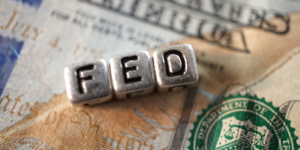News
Flash news
Oro cresce ancora: pesano tensioni in America Latina
L’oro torna ad attirare gli investitori alla ricerca di beni rifugio. Ad agitare i mercati l’intervento statunitense in Venezuela, a cui è seguita la cattura di Nicolas Maduro. Prezzi in netto rialzo nelle negoziazioni odierne, con il metallo giallo spot in crescita del 2,4% a 4.432,12 dollari l’oncia.
[Fonte: Teleborsa]
Oro chiude in bellezza: 2025 miglior anno degli ultimi quarant’anni
Nuovo rialzo per il bene rifugio per eccellenza, che dopo un calo nelle contrattazioni di ieri ha nuovamente subìto l’influenza delle turbolenze geopolitiche ed economiche. Dopo una risalita dello 0,8%, il metallo spot ha raggiunto i 4.365,86 dollari per oncia.
Il rally dell’oro di quest’anno è stato il migliore dal 1979.
[Fonte: Market screener]
Argento tocca record assoluto di 84 dollari per oncia
Nuovo massimo storico per l’argento, che nelle contrattazioni odierne ha toccato la cifra record di 84 dollari per oncia. Il guadagno registrato dal metallo bianco da inizio anno è stato del +160%, alimentato negli ultimi giorni dalle restrizioni sulle esportazioni annunciate dalla Cina. Poiché il gigante asiatico controlla circa il 60-70% delle esportazioni globali di argento, gli analisti prevedono una crisi dell’offerta di un mercato già in deficit.
[Fonte: Milano
Ultime news

Dollaro debole e nuovo taglio Fed consolidano l’oro sopra $4.100 l’oncia

L’oro raggiunge nuovi picchi storici, poi corregge: cosa succede nel mercato e perché il ribasso è “salutare”

Italpreziosi partecipa alla Salmon Gold™ Capsule Collection di Mejuri con la raffinazione dell’oro rigenerato

Argento ai massimi di 14 anni: consolidata posizione sopra $43,50

Oro ai massimi: nuove previsioni verso quota 4.000 dollari

Oro digitale: il progetto rivoluzionario firmato World Gold Council

Riserve auree USA: cosa succederebbe se Trump rivalutasse il tesoro?



